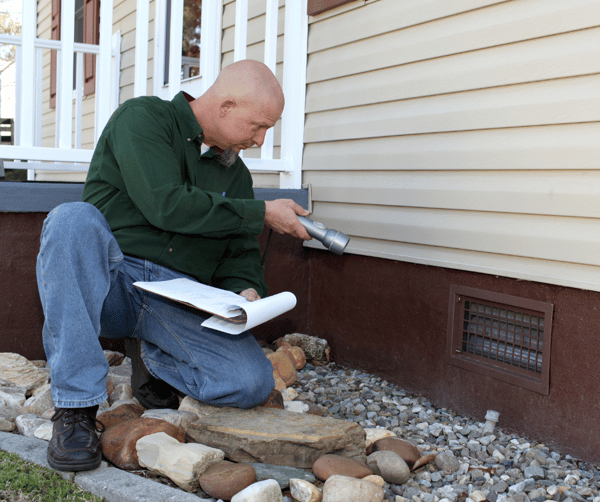Fortunately, people are talking about it more and more, but many homeowners and homebuyers still don't know what radon is.
Radon gas can be a potential issue if found in your home.
You can't see, smell, or taste radon when it is present in your home, but behind smoking, radon is the leading cause of lung cancer in the United States.
The article below will discuss a few facts about radon everyone should know.
A popular question asked is if radon mitigation systems actually work. Read our blog post: Do Radon Mitigation Systems Really Work?
Table Of Contents
- What's Radon Gas?
- How Does Radon Get into Your Home?
- Is There A Safe Level Of Radon?
- How Does Lung Cancer Affect Americans?
- Does Radon Cause Cause Any Other Health Effects?
- How Can I Test My Home For Radon?
- What's Radon Mitigation?
- Is A Radon Mitigation System Worth The Money?
- Do Radon Mitigation Systems Need To Be Maintained?
- Should You Buy A Home With Radon?
- Homes Are More Likely To Have Elevated Radon In Certain Parts Of The Country
- Contact Your Local Radon Professional
What's Radon Gas?
You can't see, smell, or taste radon, but it is a leading cause of lung cancer.
It's a byproduct of the underground decay of radioactive elements like uranium and thorium.
When uranium and other elements break down, radon gas develops and releases into the soil. Eventually, the gas works its way to the ground's surface and into the air.
Radon gas is so diluted outdoors that it doesn't pose a health risk.
But high levels of radon gas trapped indoors can become concentrated.
Every state in the U.S. has radon gas. However, some areas are at a higher risk than others, depending on the soil.
How Does Radon Get into Your Home?
Since radon is odorless, colorless, and tasteless, radon can get into your home without you even knowing it.
It can get into your home through cracks in walls, your basement floor, foundations, and any other kinds of openings.
Sometimes it can even enter through your home's water supply or building materials.
If radon gets trapped in your home, it can linger at dangerous levels, especially over a long period.
As it decays, it releases radioactive byproducts that enter your lungs as you breathe, increasing your risk of lung cancer over time and other serious health complications.

Is There A Safe Level Of Radon?
There are no safe radon levels, but the EPA recommends taking action if you have elevated radon levels over 4 pCi/L.
But because radon isn't safe at any level, it's also recommended to take action if you have radon levels between 2 and 4 pCi/L.
According to the EPA, the average level of radon gas in a home is about 1.3 pCi/L.
Those levels do not pose an appreciable risk to most residents living in the house.
All homeowners should understand the consequences of living with high radon levels and selling or buying a house with high gas concentrations.
Long-term exposure to high levels of radon can cause lung cancer.
The Environmental Protection Agency (EPA) estimates that radon exposure leads to about 21,000 lung cancer deaths among Americans every year, second only to cigarette smoking.
How Does Lung Cancer Affect Americans?
Lung cancer kills the most people in the United States.
While 9 in 10 people diagnosed with skin cancer live at least five years after their initial diagnosis, only 1 in 6 people diagnosed with lung cancer live that long. after their initial diagnosis.
Lung cancer is so deadly because it is hard to find early.
Symptoms typically do not appear until it has spread to other parts of the body.
Does Radon Cause Any Other Health Effects?
Breathing radon does not cause any short-term human health symptoms.
There are no symptoms of radon poisoning, like shortness of breath, coughing, headaches, or fever.
The only symptom of radon poisoning is lung cancer.
There is no conclusive evidence that children are at greater risk than adults from radon or that radon exposure leads to an increased risk of contracting other cancers or diseases.
How Can I Test My Home For Radon?
Fortunately, radon testing is easy to do.
Radon testing kits can be ordered online or bought at hardware stores.
Always conduct the test in the lowest livable area of your house. Perform the test in a regularly used room for the most accurate results.
Short-term tests are helpful to see if further testing is warranted.
Most short-term tests are activated charcoal-based or use electret ion methodology.
Both measure radon levels for two to seven days.
When the test is complete, you mail the tests to a lab for the results.
Long-term radon tests measure levels for 90 days to one year and are much more reliable since radon levels can fluctuate.
Most long-term tests rely on alpha particle tracking.
This test provides a more accurate indicator of average annual levels.
Average levels vary significantly from day to day based on factors like a drop in air pressure, gusty winds, variable soil moisture, and snow cover.
Continuous radon tests are also available.
Electric monitors plug into a standard outlet.
These monitors can perform short-term and long-term testing to give you a daily running average.
What's Radon Mitigation?
So what do you do if you find elevated levels of radon in your home?
If you have radon in your home, radon mitigation can make your home safe again.
A radon mitigation contractor can reduce radon levels below 4.0 picocuries per liter (pCi/L).
These mitigation systems can prevent radon from getting into your home or reduce the radon levels in the house.
Most radon mitigation systems use a vent pipe and a radon fan to move air from inside your home to the outside.

Is A Radon Mitigation System Worth The Money?
A radon mitigation system that successfully lowers indoor radon levels is absolutely worth the money.
If it keeps you from getting lung cancer, it's worth it no matter how much it costs.
Fortunately, radon mitigation systems are affordable, although the cost will vary based on your situation.
Governments are even beginning to invest in radon mitigation, including the United States federal government.
Avoiding mitigation could cost you far more in the long run.
Do Radon Mitigation Systems Need To Be Maintained?
The majority of radon mitigation systems are pretty self-sufficient.
However, like most household appliances, they will need occasional maintenance.
Most mitigation systems use warning devices to warn you when they aren't working effectively, so make sure to check on your system from time to time.
Radon mitigation systems use fans that may need to be repaired or replaced every five years or so.
Sometimes the weather can also cause problems, like ice jams.
Professionals recommend one performs annual maintenance on their radon system to ensure it's working effectively.
Should You Buy a Home with Radon?
Radon is a health hazard. Fortunately, it doesn't have to be a problem.
Once a mitigation system is in place for homes with high levels, buyers do not need to worry about the safety of the air quality in the house.
If you find a home you love, and the radon levels are slightly high, you can still purchase the house, but it is best to seek mitigation.
Homes Are More Likely To Have Elevated Radon In Certain Parts Of The Country
Every building likely contains radon, but the levels are usually low.
However, some parts of the country may have higher levels than others.
For example, radon levels may be higher in parts of the country rich in granite.
Contact Your Local Radon Professional
Knowing about radon is the best way to protect yourself from it.
If you're worried about elevated radon levels in your home, you should get it tested.
Knowing the air quality of your home will give you peace of mind and leave you breathing a little easier.
To test your potential home for radon and potentially have a radon mitigation system installed by a professional radon mitigation company, contact the qualified radon remediation contractors at Radon Eliminator.
Radon Eliminator will test your home for radon.
If your results come back high, they will install a radon mitigation system to make your new home safe to live in, all for a reasonable price.
Click the button below to schedule your Discounted Test today, and ensure you and your family's safety from high radon level exposure.

References:
https://www.oregon.gov/oha/PH/HEALTHYENVIRONMENTS/HEALTHYNEIGHBORHOODS/RADONGAS/Pages/Radon-FAQs.aspx
https://www.aprilaire.com/blog/everything-you-need-to-know-about-radon/
https://www.bobvila.com/articles/radon-in-homes/
https://www.nationalradondefense.com/about-us/articles/33923-everything-you-need-to-know-about-radon-mitigation.html
https://www.thehealthy.com/respiratory/radon-testing/
https://www.pristinehomeinspections.com/7-things-home-buyers-should-know-about-radon/
https://ukhsa.blog.gov.uk/2015/03/20/five-facts-every-home-owner-should-know-about-radon/




